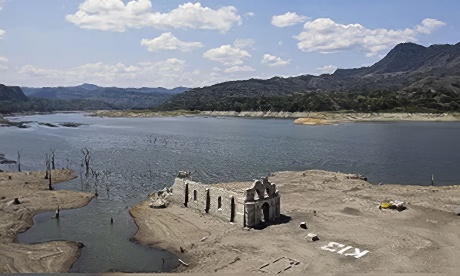A 16th-century Catholic church, known as the Temple of Quechula, has become a prominent attraction since emerging from a reservoir during a severe drought in Mexico.
Situated in the southern Mexican state of Chiapas, this historic structure was built by Dominican Order members during the era of Spanish colonialism. Since the construction of a dam on the nearby Grijalva River in 1966, the church has remained partially submerged, until now.
Recent droughts and heat waves in the region have caused the water levels to recede significantly, fully revealing the Temple of Quechula.
This extraordinary phenomenon has drawn tourists from far and wide, who can now access the church on foot or by vehicle, whereas previously it was accessible only by boat.
Visitors are thrilled at the opportunity to explore the ancient ruins easily and capture glimpses of Mexico’s rich cultural heritage.
Decline in fish population
However, while the church’s emergence has delighted tourists, it has brought about a deep concern for the local fishermen whose lives are intricately tied to the water.
With the drastic reduction in water levels, the fishing community is experiencing devastating consequences. The high temperatures have also caused a significant decline in fish populations, resulting in substantial financial losses for the fishermen.
Miguel Garcia Aguilar, a local fisherman, expressed his worries stating “The temperature is very high. So, what it does is kill the fish. The fish can’t resist, so that’s why we’re having a lot of losses.”
Another fisherman, Darinel Gutiérrez, added “What do I support my family with? Right now, I have nothing.”
The dire situation has left the livelihoods of these fishermen hanging by a thread, further exacerbating the challenges posed by the drought.
Tragically, the extreme heat has also taken a toll on human lives. Reports indicate that eight people have died in Mexico due to the scorching temperatures.
The event echoes similar discoveries around the world, raising climate change concerns. A church submerged since the 1960s in Spain resurfaced in April, while another submerged church was recently found in Germany.
